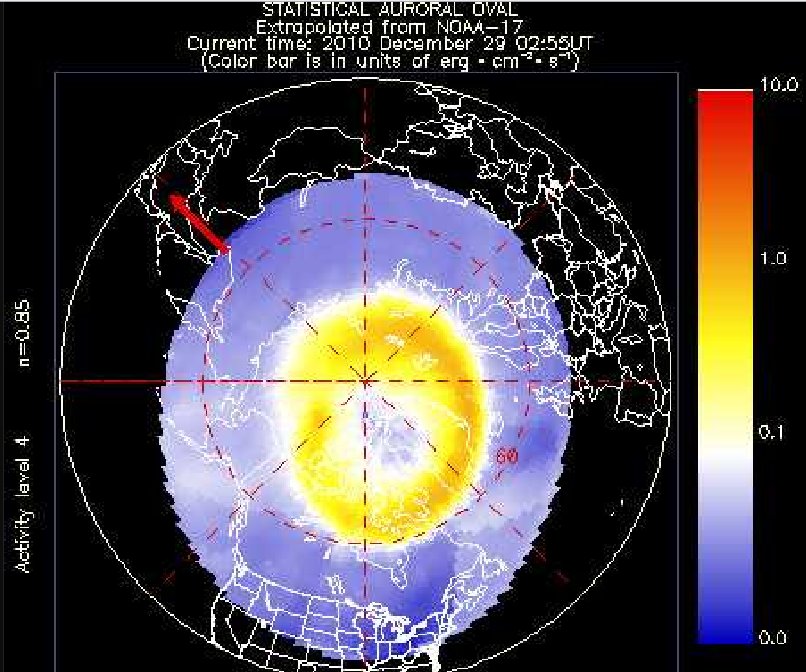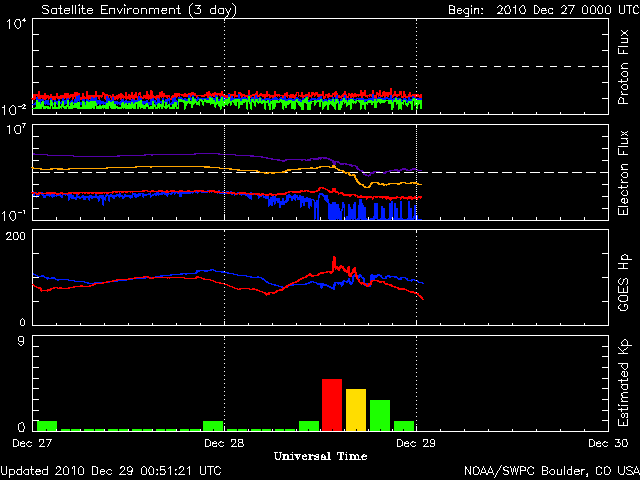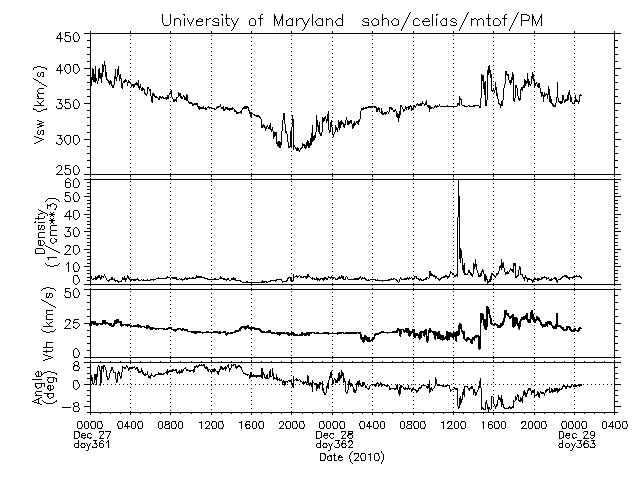Take THAT, Magnetosphere!!
G1 Geomagnetic Storm 12.28.10


Unusual activity of the Earth's Magnetosphere was observed and reported today as a "minor" G1 geomagnetic storm occurred. The NOAA Space Weather Prediction Center began issuing onset warnings at 1330 UTC (7:30 a.m. CST) with a "Geomagnetic K-index of 4 expected."The following images are from the archives of the National Institute of Information and Communications Technology (NiCT) website of the Real-time Magnetosphere Simulation These Real-time images of the earth's magnetosphere are reproduced by the real-time magnetosphere simulation system. The "movie" of today's activity can be found here  Click here for larger image.7 minutes later, the K-index of 4 was reached.  Click here for larger image.
11 minutes later SWPC posted that the G1 storm had begun with a "Geomagnetic K-index of 5 expected."The warning was in effect until 1800 UTC (noon CST). 8 minutes later, SWPC posted that the Geomagnetic K-index of 5 threshold had been reached and issued an active warning for a G1 geomagnetic storm. Click here for larger image.Approximately 3 and one quarter hours later, the SWPC posted that the warning originally predicted to end at 1800 UTC (noon CST) was being extended until "2010 Dec 29 0600 UTC" (midnight CST). The activity was persistent.  Click herefor larger image.spaceweather.com has reported "High-latitude sky watchers should be alert for auroras. During the early hours of Dec. 28th, the sun's magnetic field near Earth tipped south, opening a crack in Earth's magnetosphere. Solar wind poured and sparked a G1-class (Kp=5) geomagnetic storm. Observers are reporting ground currents and intensifying Northern Lights in Scandinavia." It will be interesting to see the auroral fields and effects, which can be observed here (Go - Images -> Showing -> Drop down - Auroras) The Kiruna All-Sky camera (same link) has started showing some activity, as does the Auroral Oval chart.  The storm certainly showed up in the satellite environment chart from NOAA, as seen below:  SOHO partical monitor also registered a spike:  Shockplotter is a project of the University of Maryland which uses near-real time solar wind and other data from the Charge, Element, Isotope Analysis System (CELIAS) experiment on SOHO. SOHO (Solar Heliospheric Observatory) is a joint European Space Agency, United States National Aeronautics and Space Administration mission. It also uses data from the Mass Time-of-Flight spectrometer (MTOF), and PM sensor on the SOHO spacecraft. The Shockplotter project uses this data to attempt to identify possible interplanetary shocks. Shockplotter stated a 68% confidence level of a zone 2 forward shock 28 Dec 2010, 1445 UTC (9:45 a.m. CST). As of this writing at approaching 29 Dec 2010, 0400 UTC, there have been no new alerts. However, a peek at the Real-time Magnetosphere Simulator shows that it's not all calm yet.  Click here for larger image.There is certainly enough going on out there lately to warrant continued observation. Stories abound about concerns with the activity of good 'ol Sol, and what it means for us. Here's one just today, Space weather: Forecasters keep eye on looming 'Solar Max'  Further observations of the possibly probable pending general all-round smack down of the planet will be ongoing, and reported as needed. Lorie Kramer - Houston, TX |